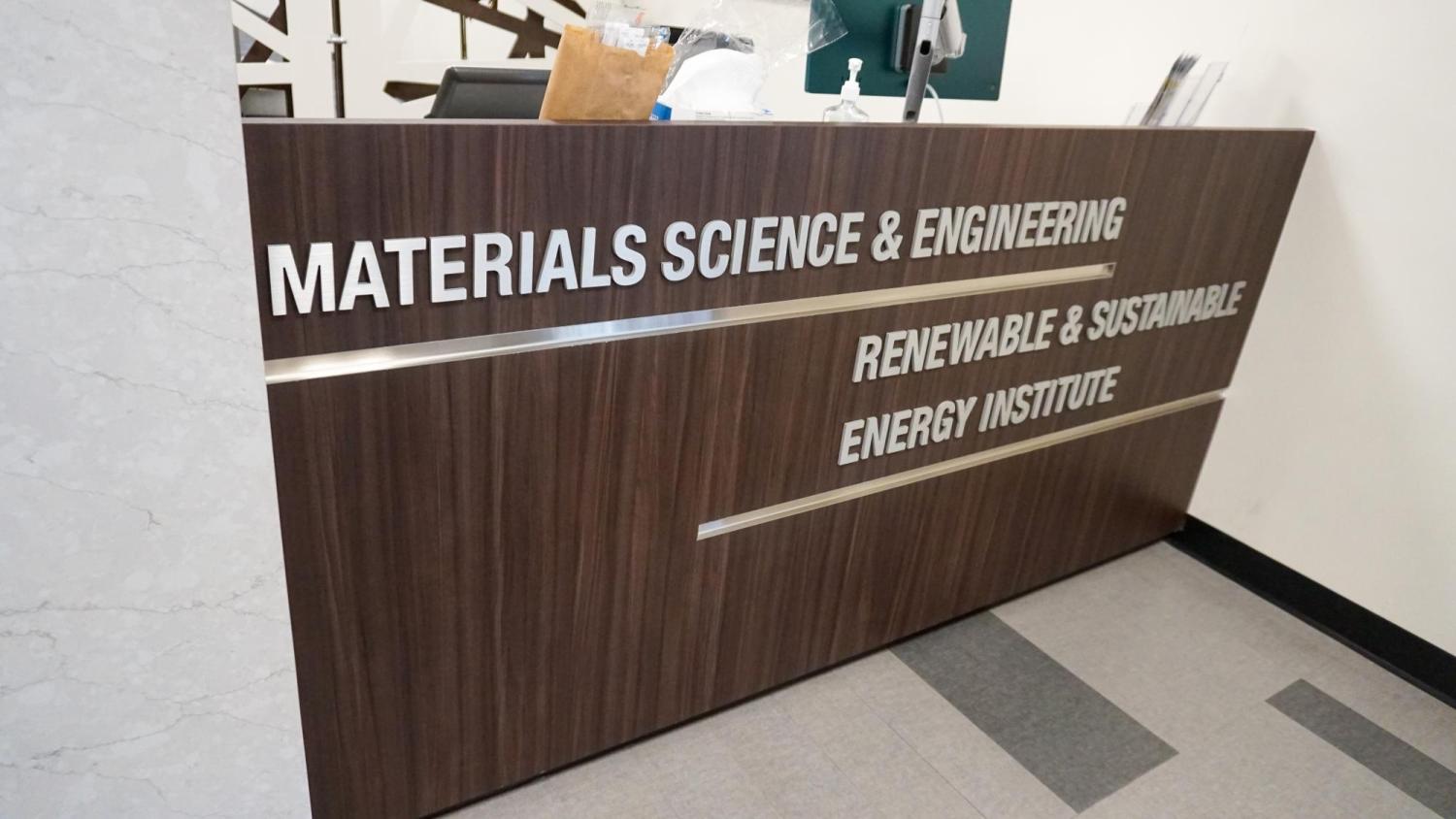Rapid growth from a strong foundation - Letter from the Director, Spring 2022

The program now boasts its own dedicated faculty offices, graduate student desks and work spaces in the SEEC building on east campus.
Dear Colleagues and Friends,
With this inaugural newsletter, I would like to take this opportunity to share with you a little history of our program and its growth since its inception. I recently became director of the Materials Science and Engineering Program here at CU Boulder in July 2021 and am honored to lead such an outstanding group of faculty and students who are at the forefront of exciting materials research in several critical areas of national interest that range from combating climate change to improving human health outcomes.
While the Materials Science and Engineering Program is relatively new — we founded it in 2013 — research and education in materials has a long and rich history at CU Boulder. Faculty passionate about materials created the program to foster stronger, cross-departmental collaborations in the field and to train the next generation of dedicated materials scientists and engineers. Our graduate degree program arose out of a need to recruit a different type of graduate student — one with a passion and talent for interdisciplinary research, which is critical for success in the materials field.
A state-of-the-art X-ray Diffraction System brings new non-destructive capabilities to determine the structure of a wide variety of materials and material composites.
X-ray photoelectron spectrometry with a UV photoelectron spectrometer (XPS/UPS) coupled to high-sensitive low energy ion scattering (HS-LEIS) spectroscopy will offer unprecedented chemical analysis of the surface of materials undergoing chemical reactions.
Established and early career faculty hires
Our program now proudly boasts more than 50 participating faculty, all of whom offer something unique to the field. In recent years, we have been incredibly fortunate to help bring materials-focused faculty to CU Boulder, including seven senior hires with national recognition as top researchers and educators in materials.
Michael McGehee, Michael Toney, Seth Marder and Joseph Berry strengthen CU Boulder as a leader in materials for renewable and sustainable energy. Soft material researchers like Timothy White, Ryan Hayward and soon-to-be-Assistant Professor Kōnane Bay (starting fall 2022) contribute to a growing center of excellence in this field at our university. The hiring of Jason Burdick — a CU Boulder alumnus — further solidifies CU Boulder as a leader in biomaterials.
Our faculty are recognized for their outstanding materials research, having won eight singular awards from the Materials Research Society (MRS), which is undoubtedly the premier society for our field. Moreover, Kristi Anseth is a past president of MRS and one of only a few in the world elected to all three national academies: the National Academy of Engineering (NAE), Science (NAS) and Medicine (NAM). The Society for Biomaterials has honored several of our faculty with prestigious awards going back to 2005, with the Clemson Award going to Chris Bowman, who is one of the founders of our MSE Program and a NAE and NAM member. Most recently, their 2020 Founders Award went to Professor Anseth.
Our faculty are truly outstanding, with over half of them receiving national recognition through early career awards, including three PECASE winners and five being elected to the National Academy of Inventors: professors Anseth, Bowman, Burdick, Marder and Noble. The materials community at CU Boulder boasts four NAS members: professors Anseth, Clark, Kapteyn and Murnane.
Industry applications
Our faculty and students are also developing emergent technologies that have led to numerous commercialization successes. Examples include Colorado Photopolymer Solutions, which recently merged with Arkema. Solid Power Inc. is leading the industry in solid-state batteries for electric cars. One of our newest companies, TYNT Technologies, is developing energy-efficient dynamic windows. Together, the materials community at CU Boulder is making a real impact in industry and beyond.
New facilities at SEEC
Faculty recruitment and success are not the only areas in which MSE has grown. Recently, work was completed on a beautifully renovated, dedicated space in the Sustainability, Energy & Environment Community (SEEC) Building, which now houses our program offices, a community shared space, conference rooms for breakout discussions and dedicated desk space for our graduate students.
Focus on graduate student success
New lab spaces for innovative materials science and engineering work are coming online.
The heart of our community remains our graduate program and students. They make what we do here special — from the incredible, cross-disciplinary research they conduct to the social and mentoring activities they organize with one another. I encourage you to read our student profiles on our website, which highlight many of our diverse and accomplished students in our program. A few examples include NSF Fellow Danielle Beatty, Emmanuel Bamidele, who hails from Akure, Nigeria, and GAANN fellow Melvin Colorado Escobar. Our program began with the enrollment of just two students in 2013 and has since flourished to over 70 MS and PhD candidates currently in the program. This alone is worth celebrating.
Going forward, we plan to send out newsletters in the fall and spring semesters. We are excited to share all the great news and happenings in MSE, from student achievements to faculty research and special events. Thank you for being part of our journey.
Sincerely,
Professor Stephanie Bryant
Director, Materials Science and Engineering Program

